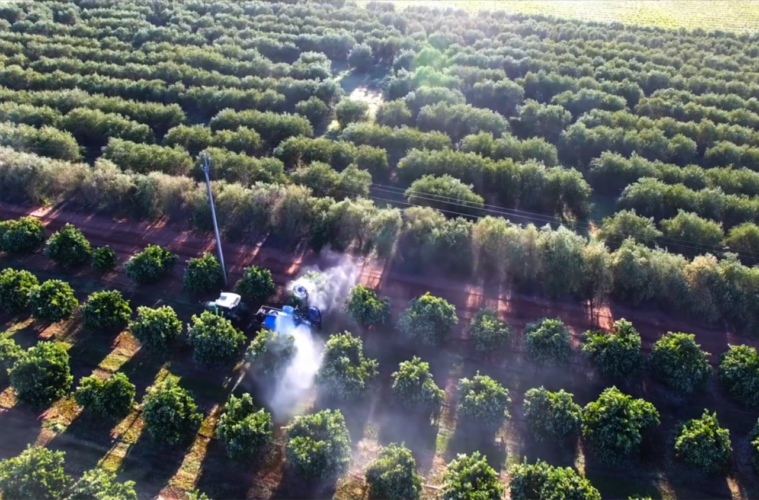The serene Ojai Valley at the foot of the Topatopa Mountains in Ventura County is famous for its idyllic rolling hills and farmland, orange groves, zen-like boutique hotels and swanky new age shops in its charming village center. The Ojai Music Festival attracts hundreds to the four-day event in June each year, as does the Sunday farmers market.
With more than 5 million pounds of agricultural pesticides being sprayed annually in Ventura County, it’s also one of Southern California’s most toxic sites. More than 50,000 pounds of chemicals are sprayed every year in Ojai alone.
In Regenerate Ojai, narrated by Laura Dern, filmmakers Josh and Rebecca Tickell take a shocking and revealing look at the amount of toxic chemicals that are sprayed in the valley and the effects the exposure has had on generations of residents and farmworkers.
The chemicals include Abamectin, Thiamethoxam and Glyphosate (better known as the weedkiller Roundup.) The pesticides are spread by antiquated fan sprayers and aerial application via helicopter, drifting particles throughout the valley.
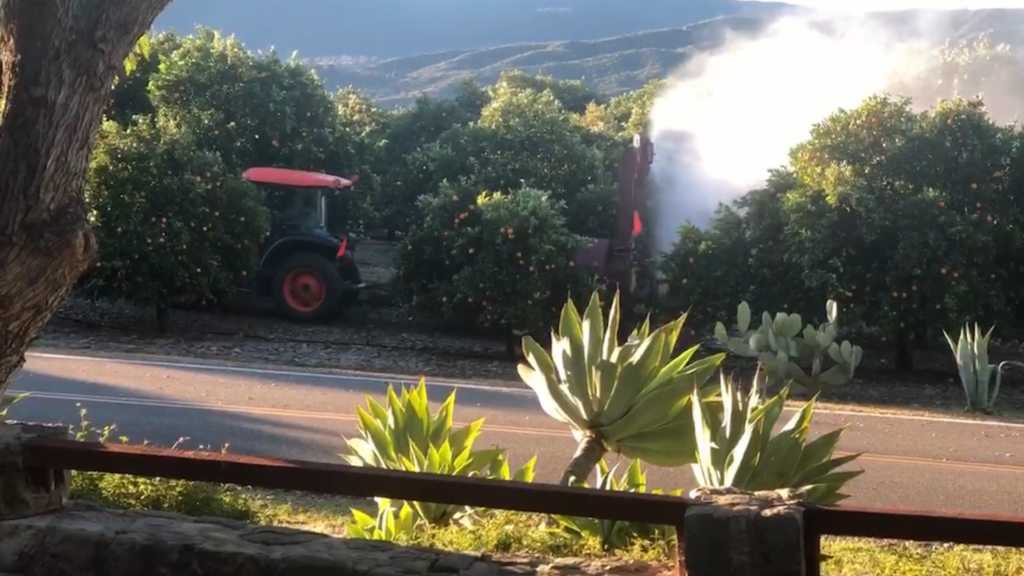
More than 50,000 pounds of chemicals are sprayed every year in Ojai alone (Courtesy Regenerate Ojai)
According to an Environmental Working Group analysis of pesticide use data for the county from 2015 to 2020, more than a million pounds of pesticides linked to cancer are used in the county each year, on average. Pesticide spray quantities and frequency data come from the Ventura County Agricultural Commissioner’s Office.
The county’s farm fields grow a produce-aisle assortment of labor- and pesticide-intensive crops including strawberries, celery, lemons and raspberries. Tens of thousands of farmworkers live and work in the county to support Ventura’s annual $2 billion agriculture economy.
According to the filmmakers, much of the county’s population of 846,000 faces the potential health risks associated with pesticides drifting from the fields, whether they work in agriculture-related fields or not. The quiet setting has been a popular retirement community for decades. The film documents cases of breast cancer and leukemia in children who live and play next to the treated orange groves.
Dern’s mother, actress Diane Ladd, an Ojai Valley resident, appears in the film discussing the damaging effects living in the valley have had in her own life. She’s worked with fellow community members since 2019 organizing in the Ojai Valley to force a community conversation and action. This includes a petition, and community town hall meetings in Ojai asking for steps to reduce pesticide spraying in the area. Famed chef Alice Waters and Chumash Tribal Council member Salvador Ambriz also appear in the 30-minute documentary.

“When people come to Ojai looking to move here, locals whisper to them, ‘just don’t move to the east end, it’s a breast cancer cluster.’” (Courtesy Regenerate Ojai)
“When you’re looking out at the beautiful landscape you can’t see that there’s a toxic chemical drift in the air, but people experience it in the form of asthma, cancer, Parkinson’s disease, and ALS,” filmmaker and Ojai resident Rebecca tells L.A. Weekly. “Over the last four decades, I have talked to so many people – especially women – who have been bullied for asking questions about health and human rights, realizing that there is a link to cancer clusters we see here in Ojai, as well as greater Ventura County.”
According to husband Josh, who together with Rebecca has produced eco documentaries including Kiss The Ground on Netflix and On Sacred Ground, decades of chemical spraying in Ventura County’s multimillion dollar agricultural industry is not only crippling its residents, but the very ground they live on.
“The largest crops by revenue are citrus, especially for Ojai,” he says. “You’ve got lemons, which are an incredibly valuable crop, and then all the various forms of oranges. The issue very specific to a tree growing region is that as climate pressure has gone up, and as water prices have gone up, the soil has become more brittle and the trees have become weaker. They aren’t native to this region nor is the pest they are actively trying to kill, which is the Asian citrus psyllid. There have been studies done in Florida that the trees can have the bug and the presence of the disease and can still bear fruit and be fine for years. But that requires healthy trees, and healthy trees require healthy soil. You can go to any of the orchards around here, with the exception of a few regenerative and organic farms, and if you’re actually able to actually pick up some soil through the hardened surface, you’ll pick up dust. There’s no soil left. They’ve destroyed the very thing that keeps the tree healthy. So the only way to prevent those pests en masse is to use neurotoxins similar in chemical structure to what was used in WWII and Vietnam. They function the same way on humans as they do on insects. That’s the nature of the neurotoxin. It attacks the brain stem first.”
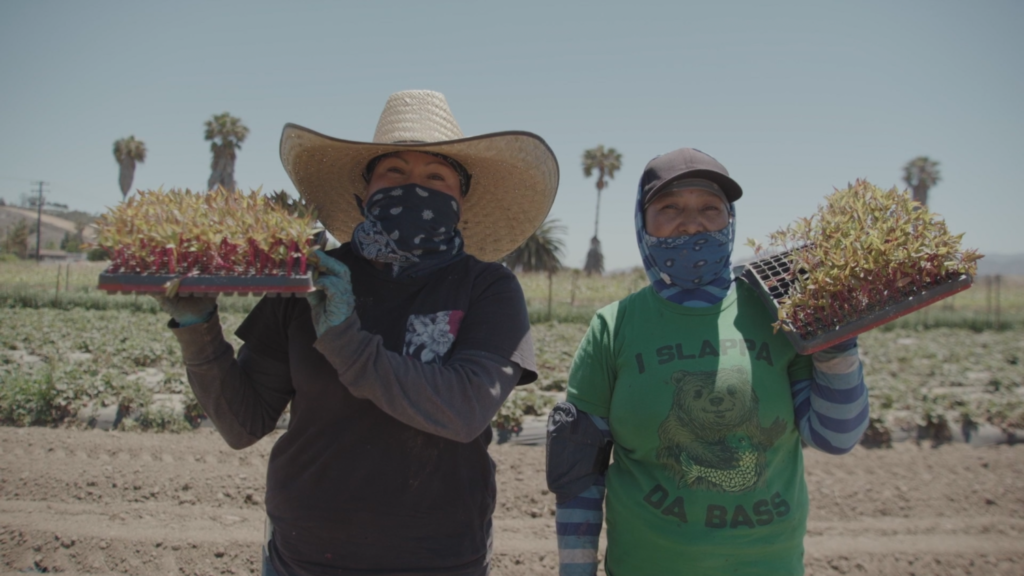
“It’s hard to record the results, because people who are affected are too afraid to report it, because if they do, they’re either afraid of losing their jobs or getting deported.” (Courtesy Regenerate Ojai)
As the climate pressures have increased, people have moved closer to farm fields, resulting in chemical sprays near schools and playgrounds. According to the Tickells, the Ojai spray schedule is 72 times a month. The results can manifest as Non-Hodgkin’s lymphoma, Parkinson’s disease and are linked to long-term damage from neurotoxins.
“The final nail in the coffin to this broken system, these folks are the American farmers trying to make a dollar, but the majority of the farm labor are Mexican immigrants,” says Rebecca, who with husband Josh have been labeled fear mongers and troublemakers by some legacy farmers, to the extent of having broken concrete dumped in their mailbox. “Those are the people who actually physically mix and administer the chemicals or they’re picking the orchards right after the spray. The length of exposure of these people is off the charts. Blindness is a common problem. There’s a saying among that community – ‘You go to America to work in the fields, but you go home to Mexico to die.’ It’s hard to record the results, because people who are affected are too afraid to report it, because if they do, they’re either afraid of losing their jobs or getting deported.”
So how hard is it to shift a multimillion dollar industry over to regenerative agriculture, a rehabilitative approach on topsoil regeneration, biodiversity and strengthening the health and vitality of farm soil?
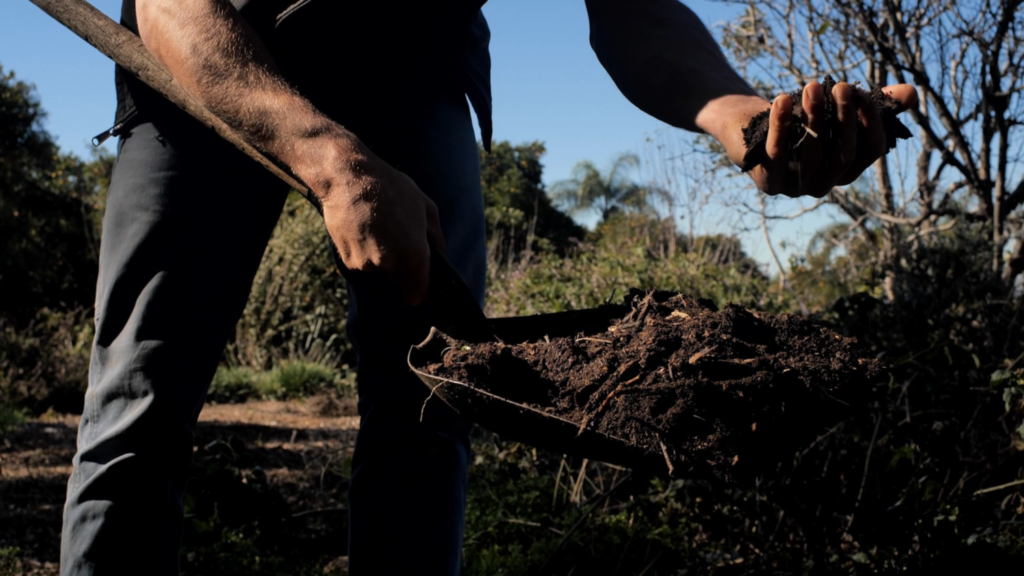
Courtesy Regenerate Ojai
“It’s inevitable,” says Rebecca. “The farmers are having to pay an increased price for input costs, water, the chemicals, they’re getting lower yields and the soil is degrading. The profit margin is drastically dwindling. We sat down with some of the most profitable legacy farmers families in the Ojai valley seven years ago and they told us then that they estimated they only had about 10 years left to farm and would go bankrupt after that. In the east end of Ojai where the orchards are, you can see now – as opposed to five years ago – many of the plots where orchards used to be are now just dirt.
“We’re starting to see younger people coming in wanting to buy property and turn it into regenerative farms,” she says. “The days of mono crop citrus are done. In a regenerative system, there’s biodiversity with cover crops; healthy soil that has a huge microbiome is communicating from one type of tree to another to a shrub to a tall grass. Within that network, it’s able to deliver nutrients where they are needed. The intelligence of a biodiverse ecosystem knows how to protect itself. It’s resilient in its design.”
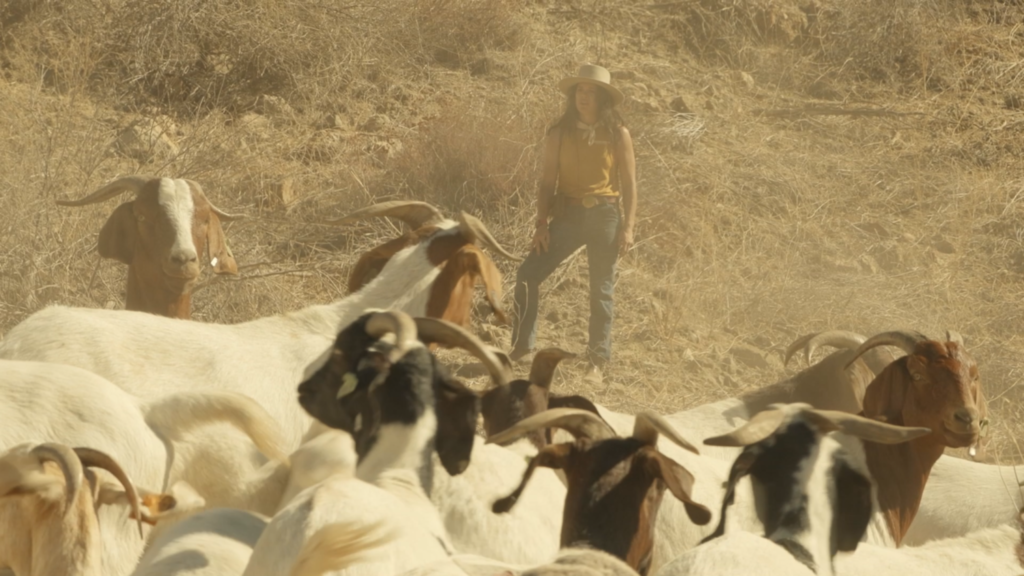
“In a regenerative system, there’s biodiversity.” (Courtesy Regenerate Ojai)
The idea is to fix the old agricultural model to mimic the way nature intended, by integrating life into the farms. That helps with clearing weeds and creates a biodiverse ecosystem that includes owls and hawks and birds that eat the bugs, which creates the fertilizer that goes back into the ground.
With continued opposition, the regenerative revolution is an uphill battle, but the Tickells are relentless in making the valley a safe and healthy place for their children and their llamas.
“When people come to Ojai looking to move here, locals whisper to them, ‘just don’t move to the east end, its a breast cancer cluster.’” Rebecca says from their Big Picture Ranch in Ojai. “But they don’t want to say it too loudly because of the fear it will affect the property values and hurt the farmers. I don’t think the farmers want to hurt anybody, but so much misinformation has been propagated by the chemical companies. We’re getting the kind of science that money can buy.”
We reached out to some of the farmers but have not heard back by presstime. You can watch the documentary here.
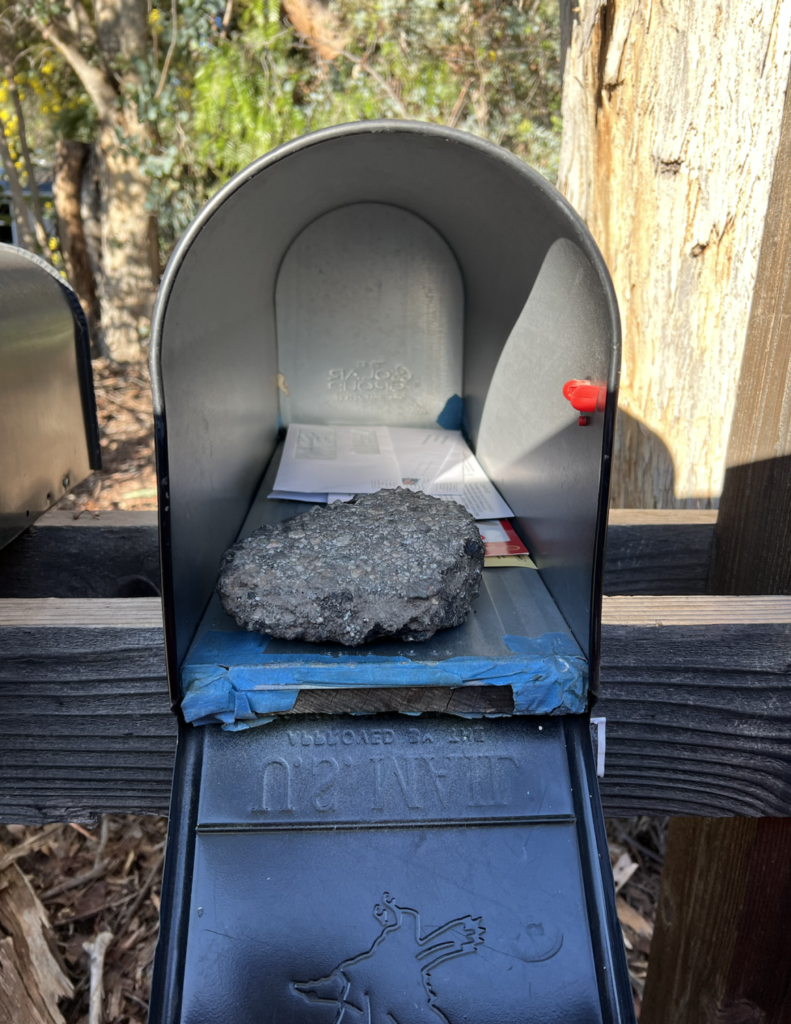
With continued opposition, the regenerative revolution is an uphill battle (Courtesy Rebecca Tickell)
Advertising disclosure: We may receive compensation for some of the links in our stories. Thank you for supporting LA Weekly and our advertisers.

